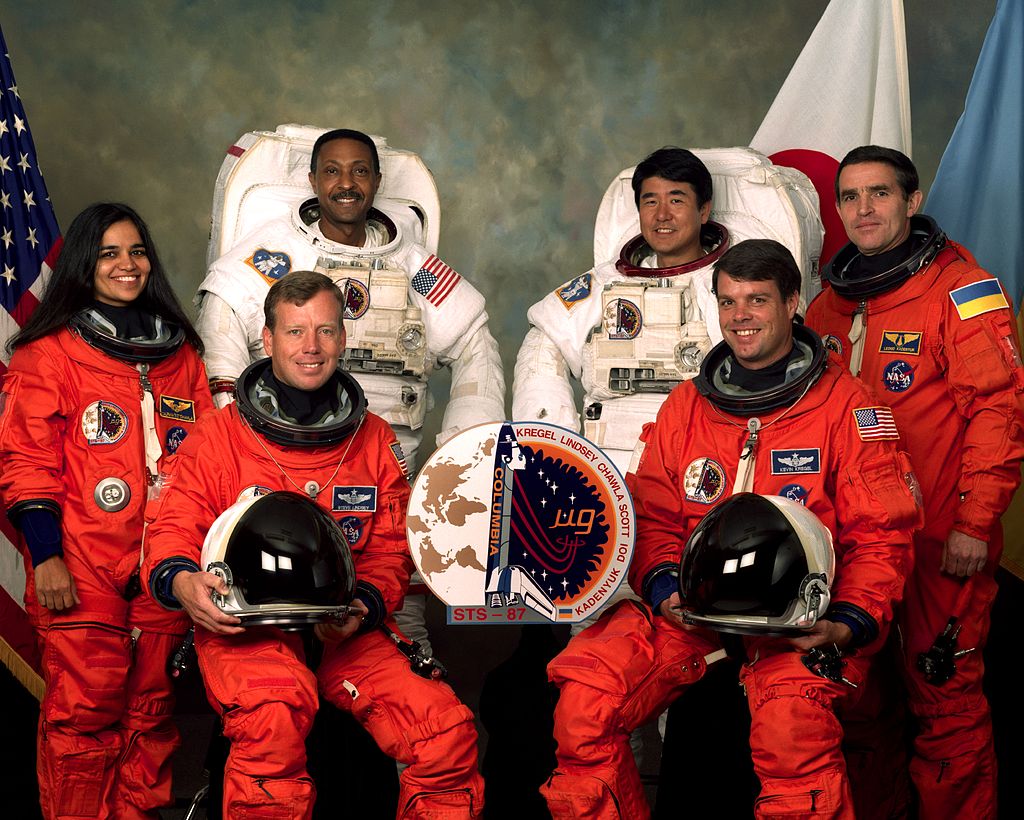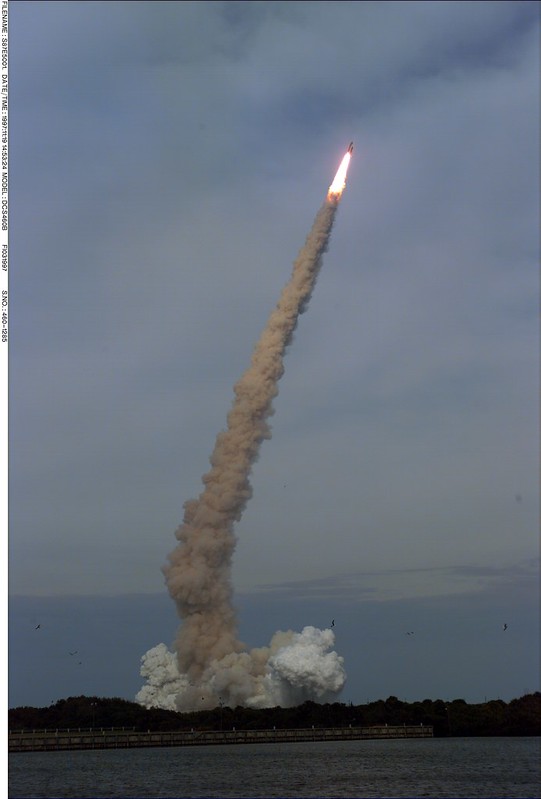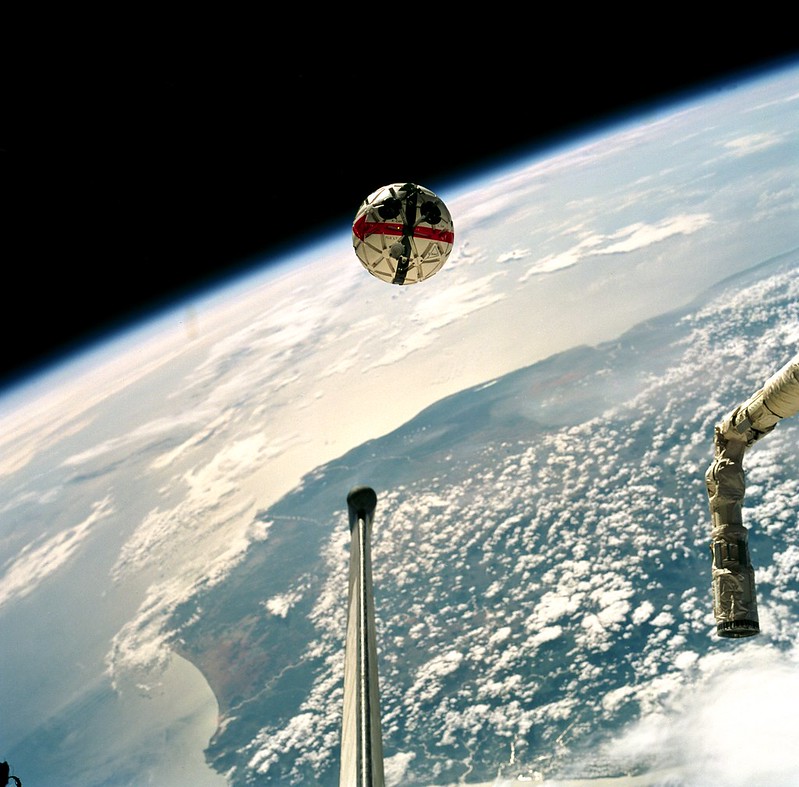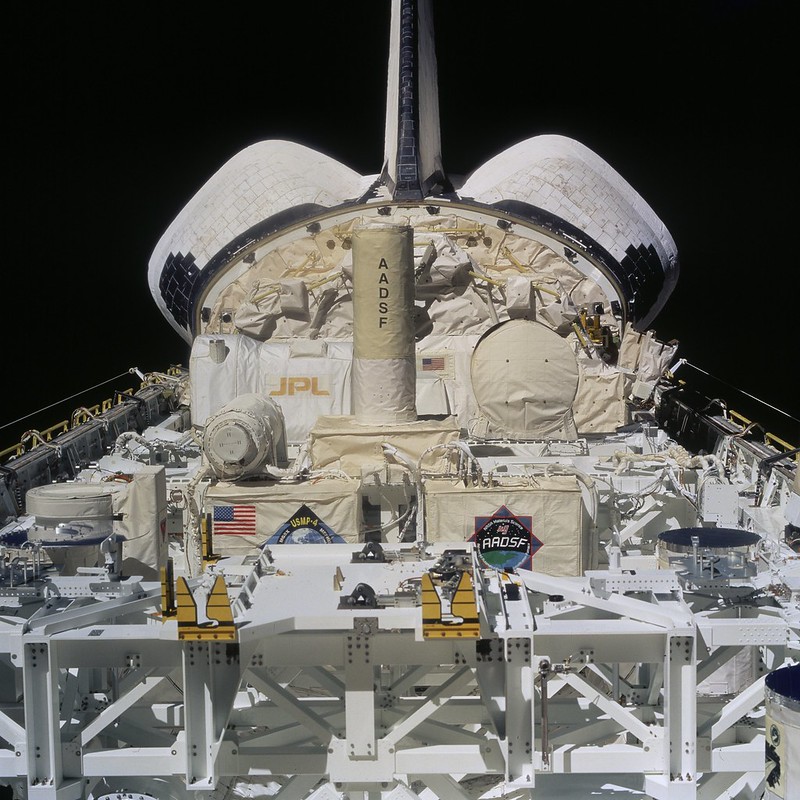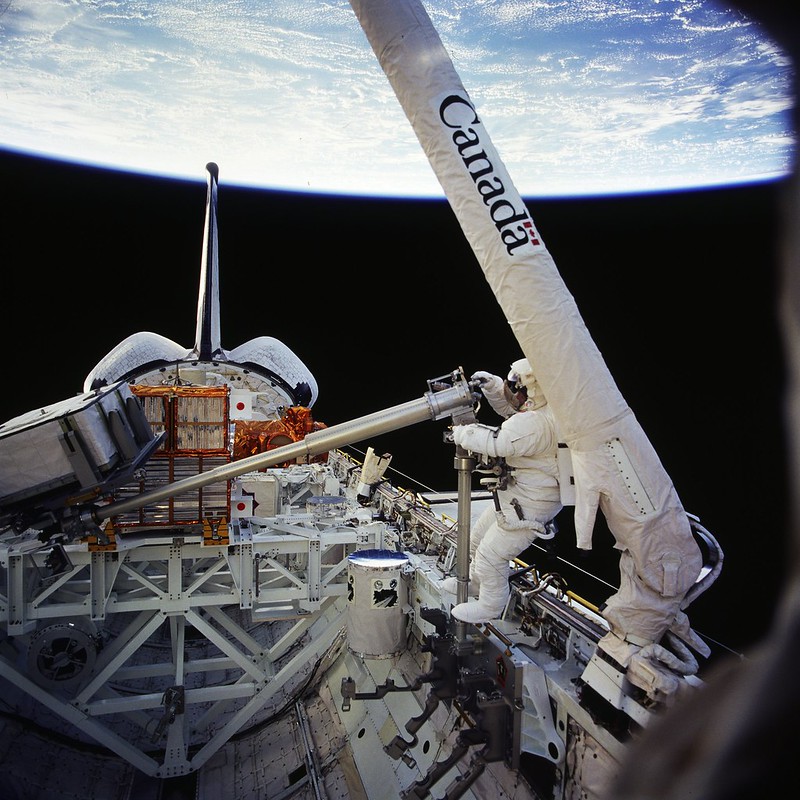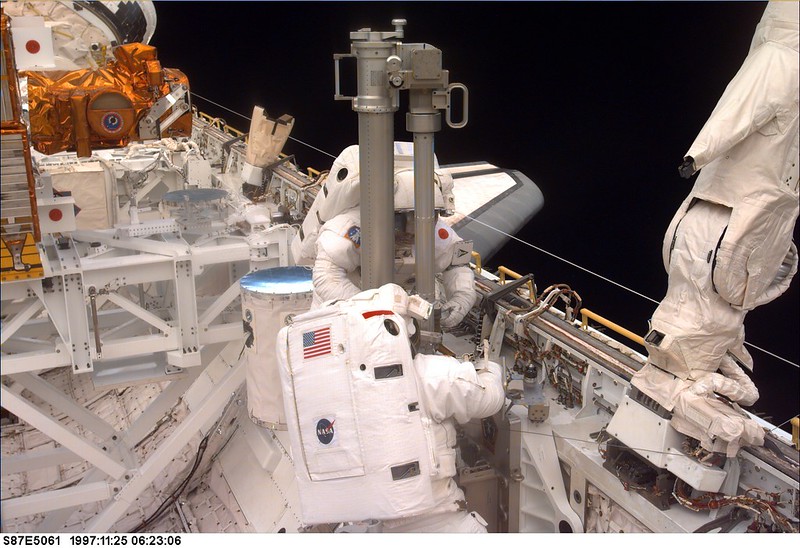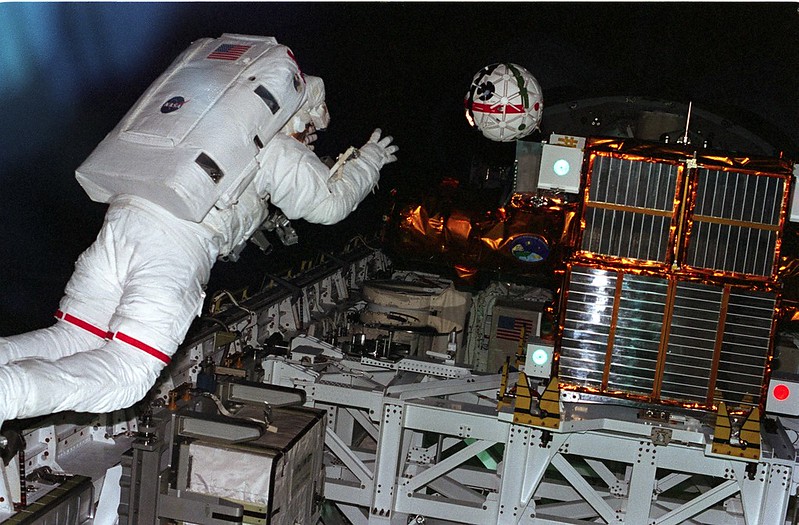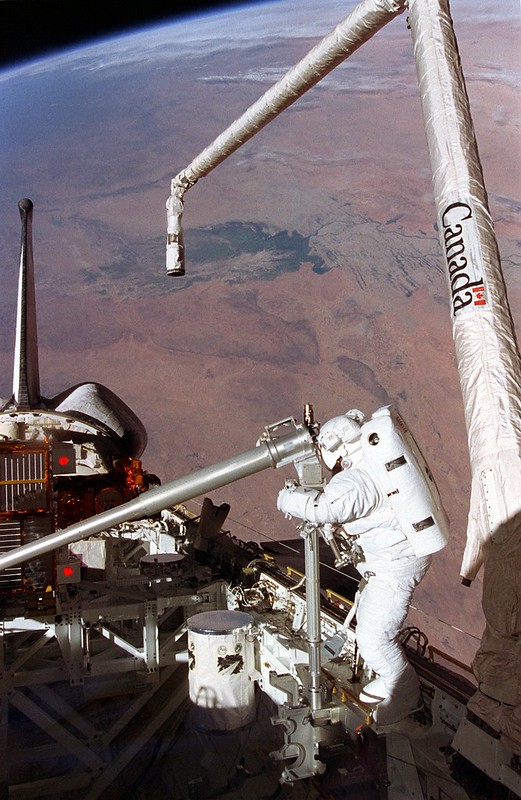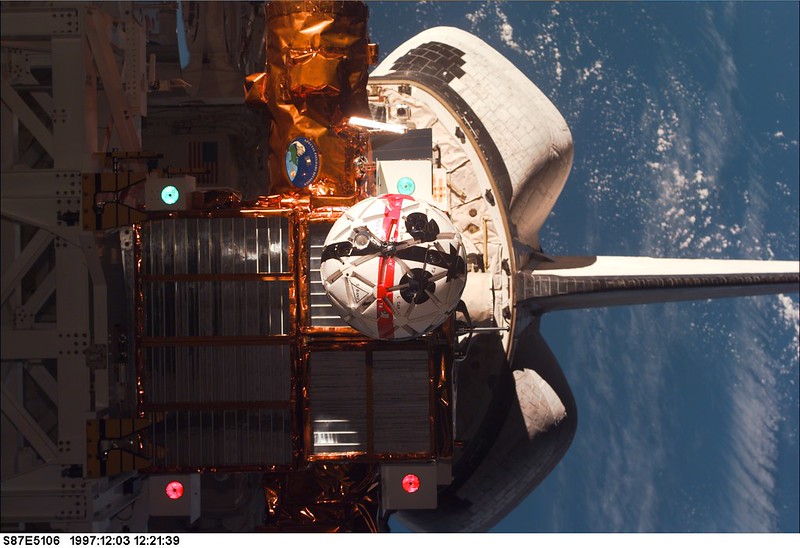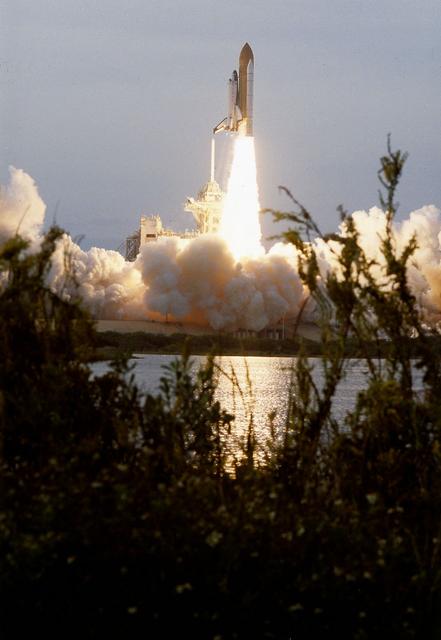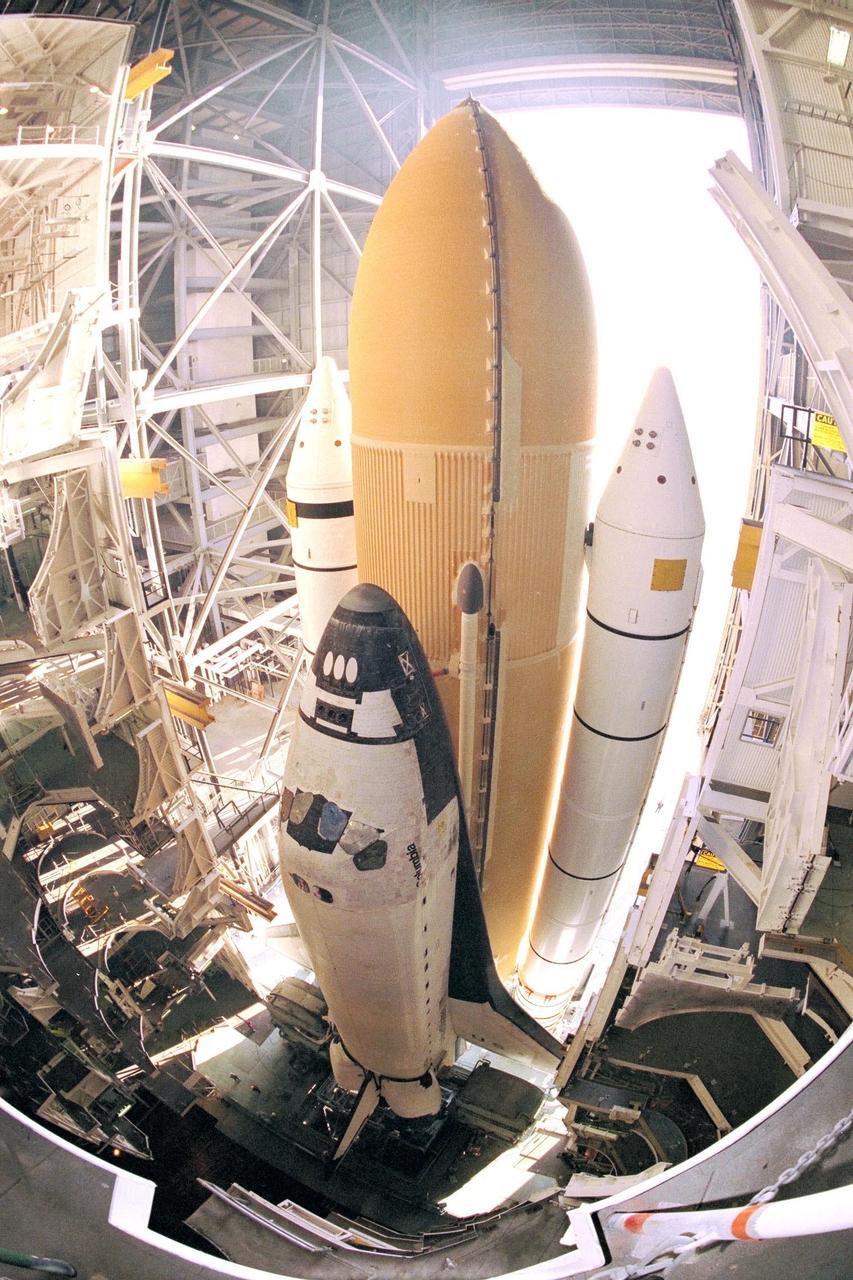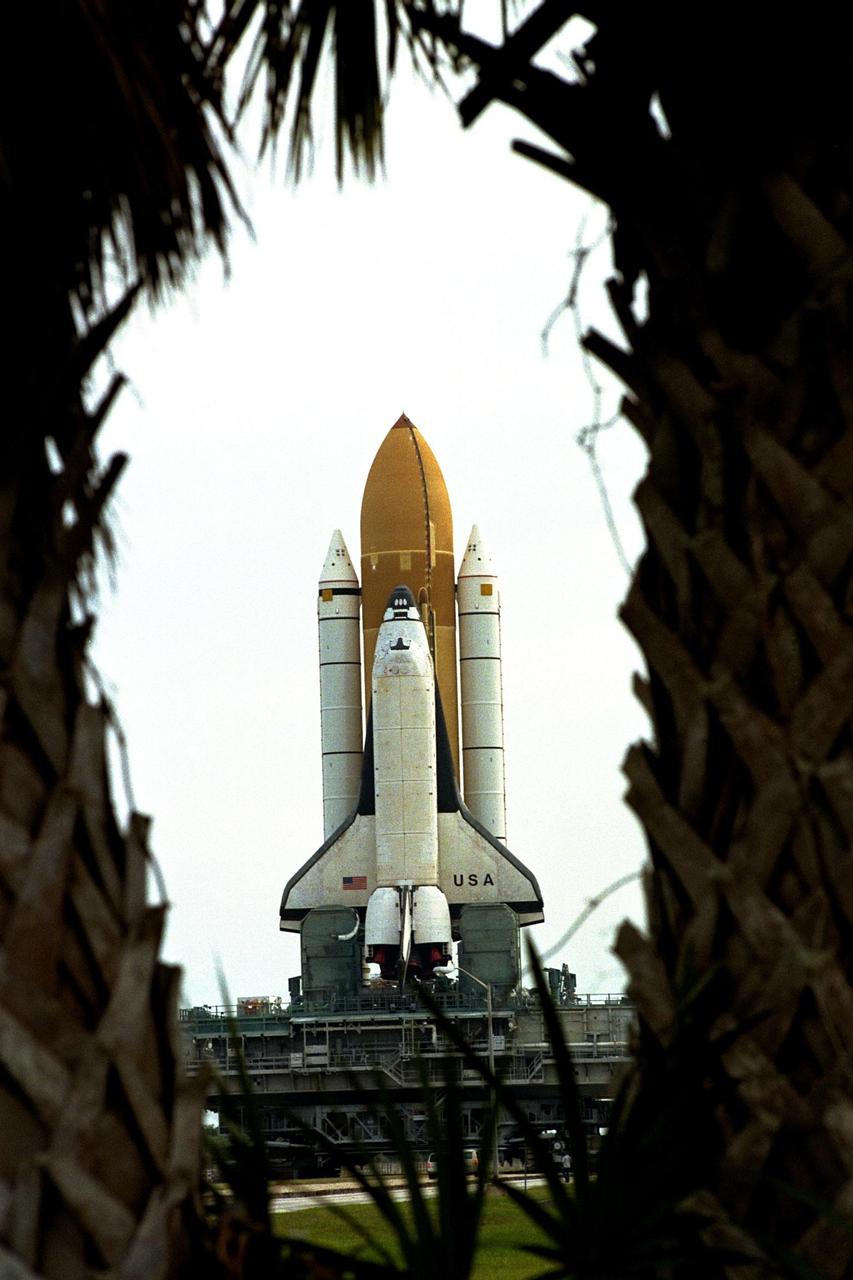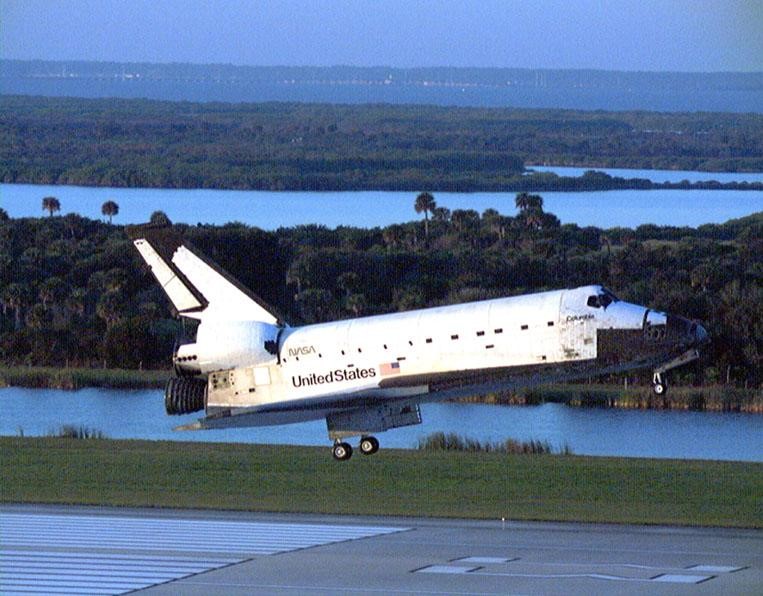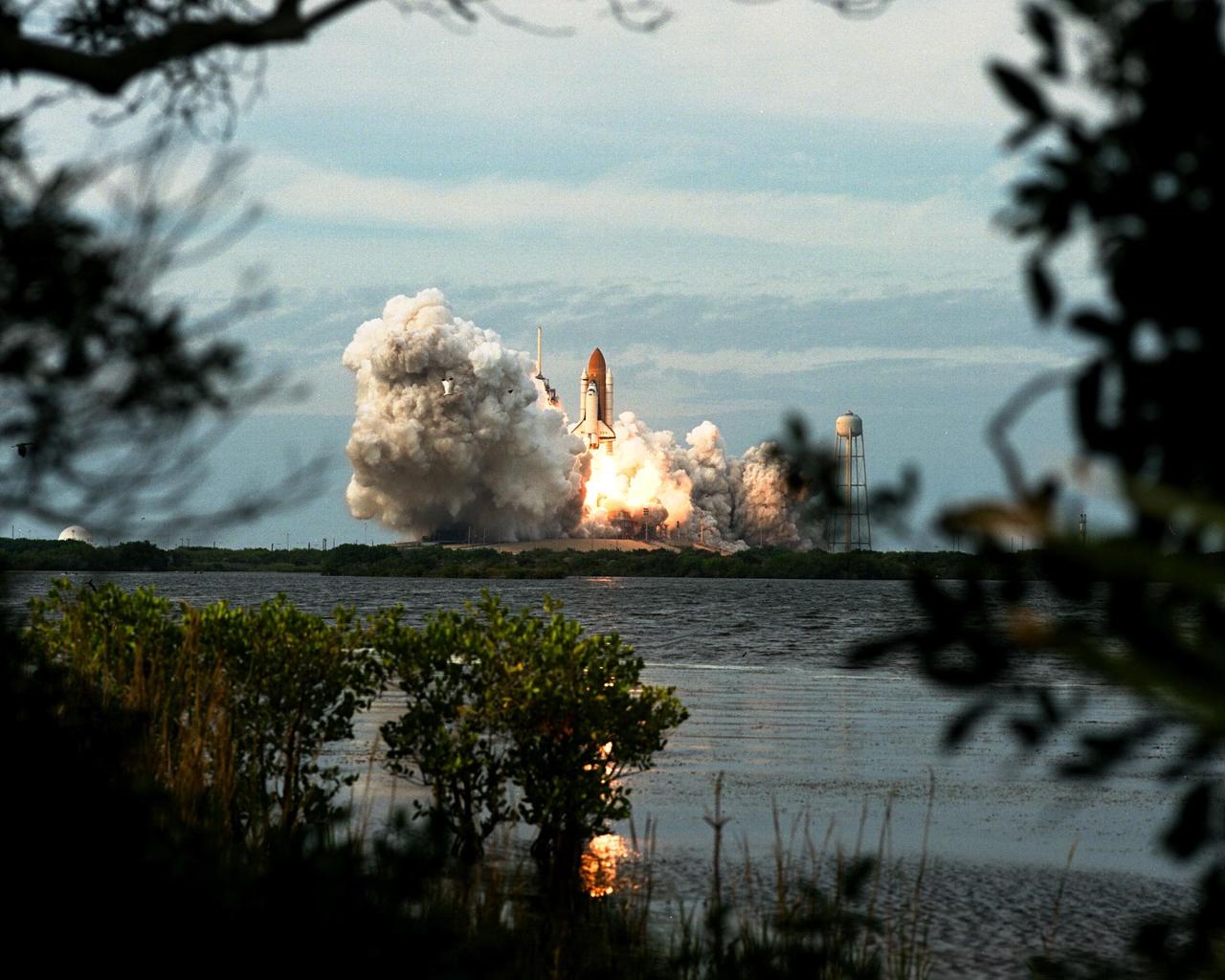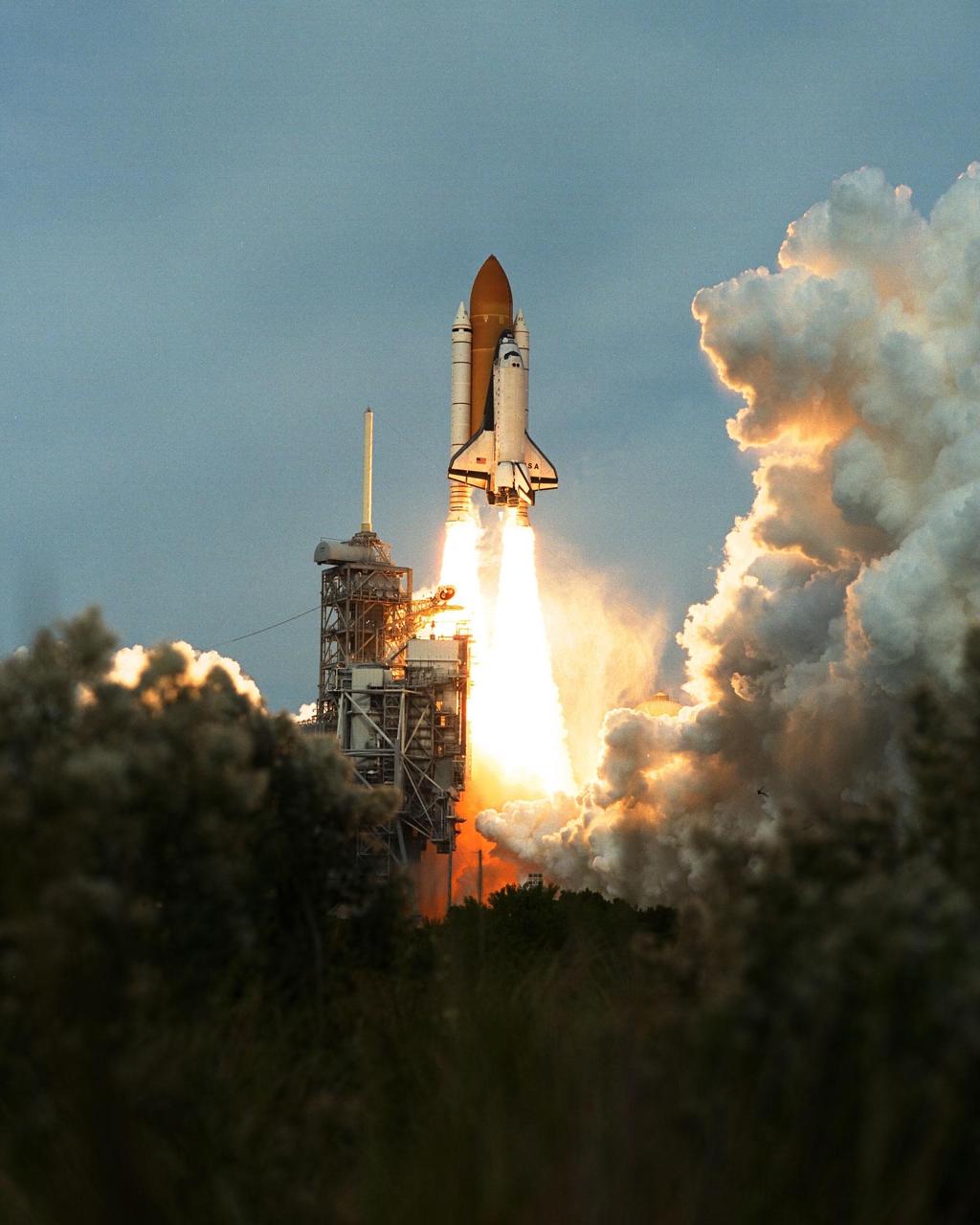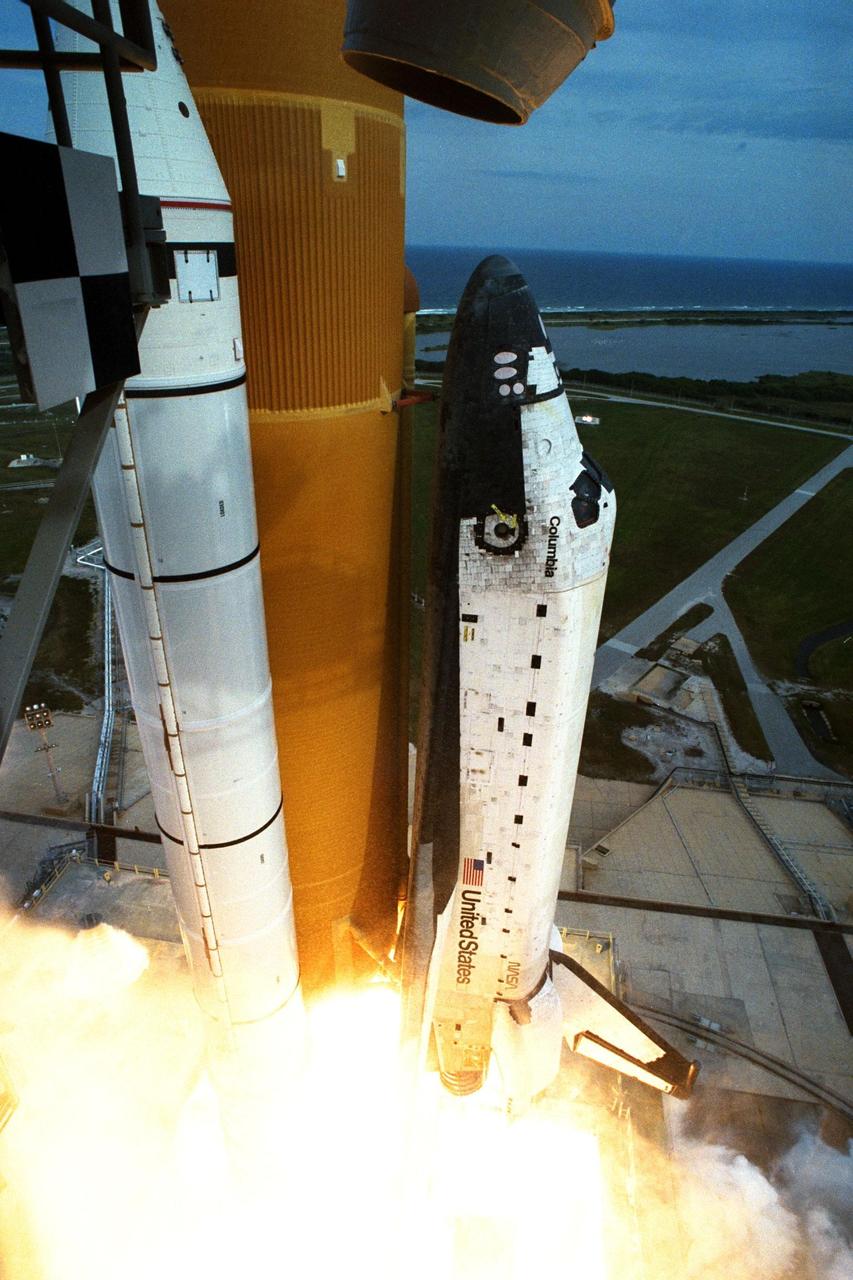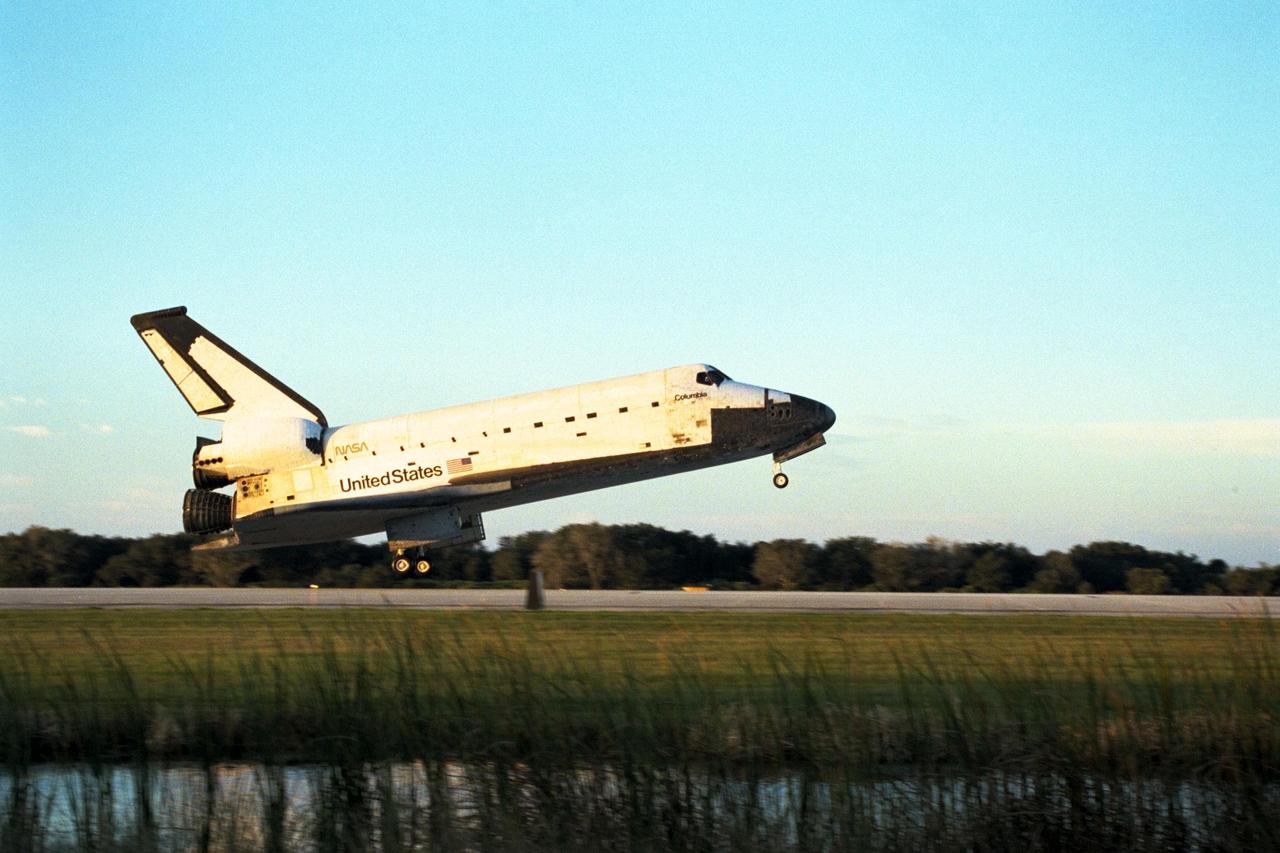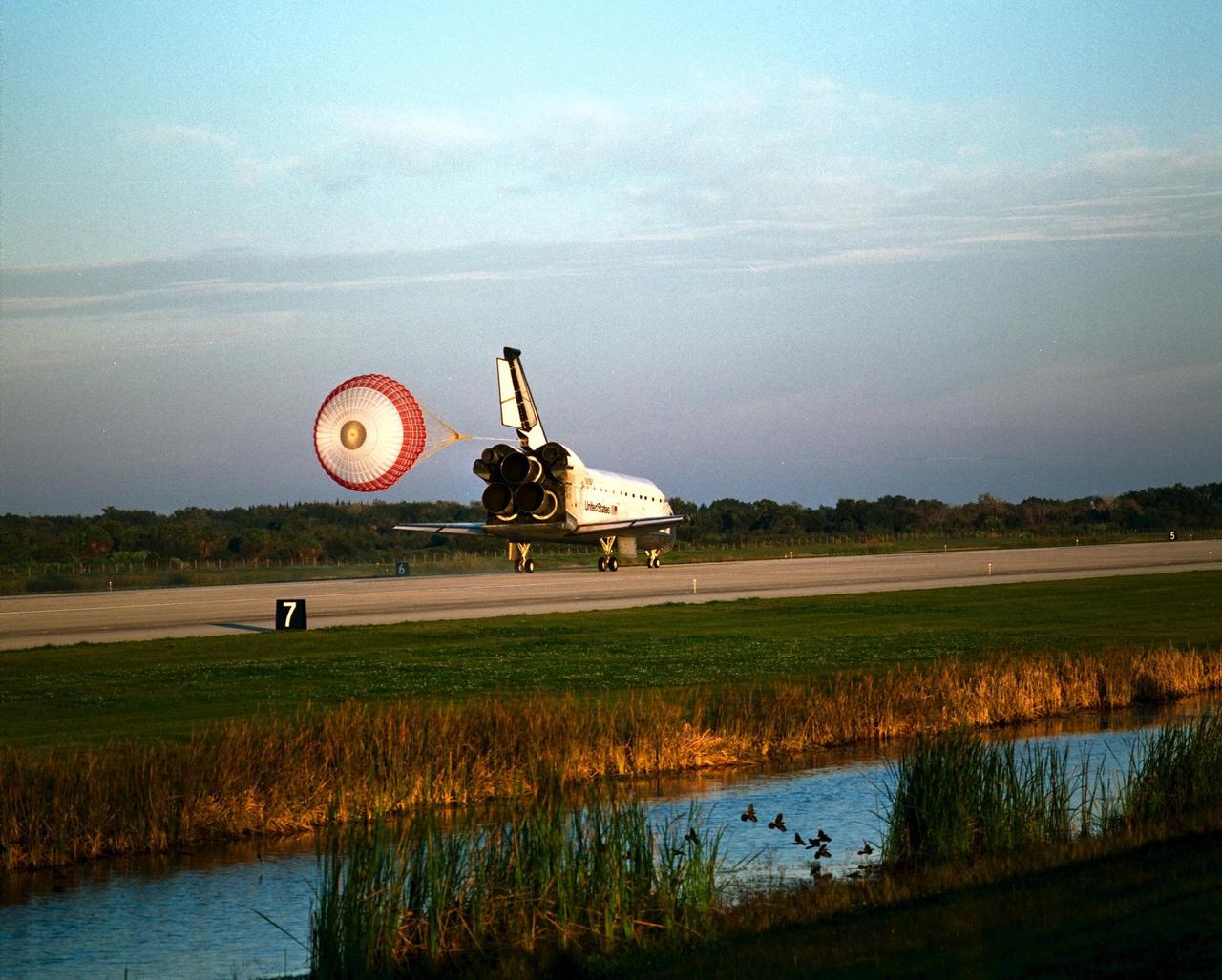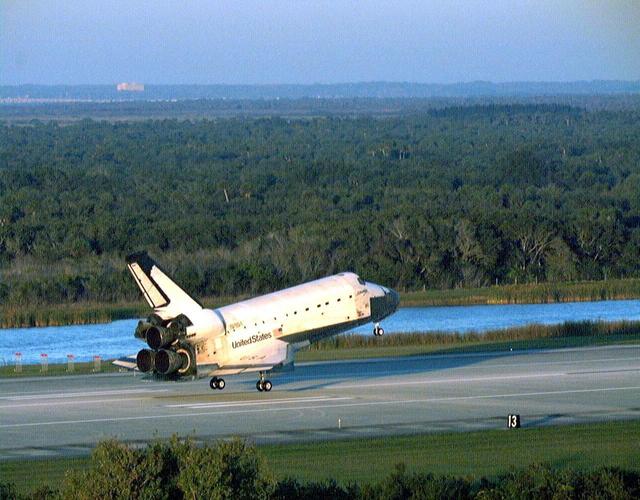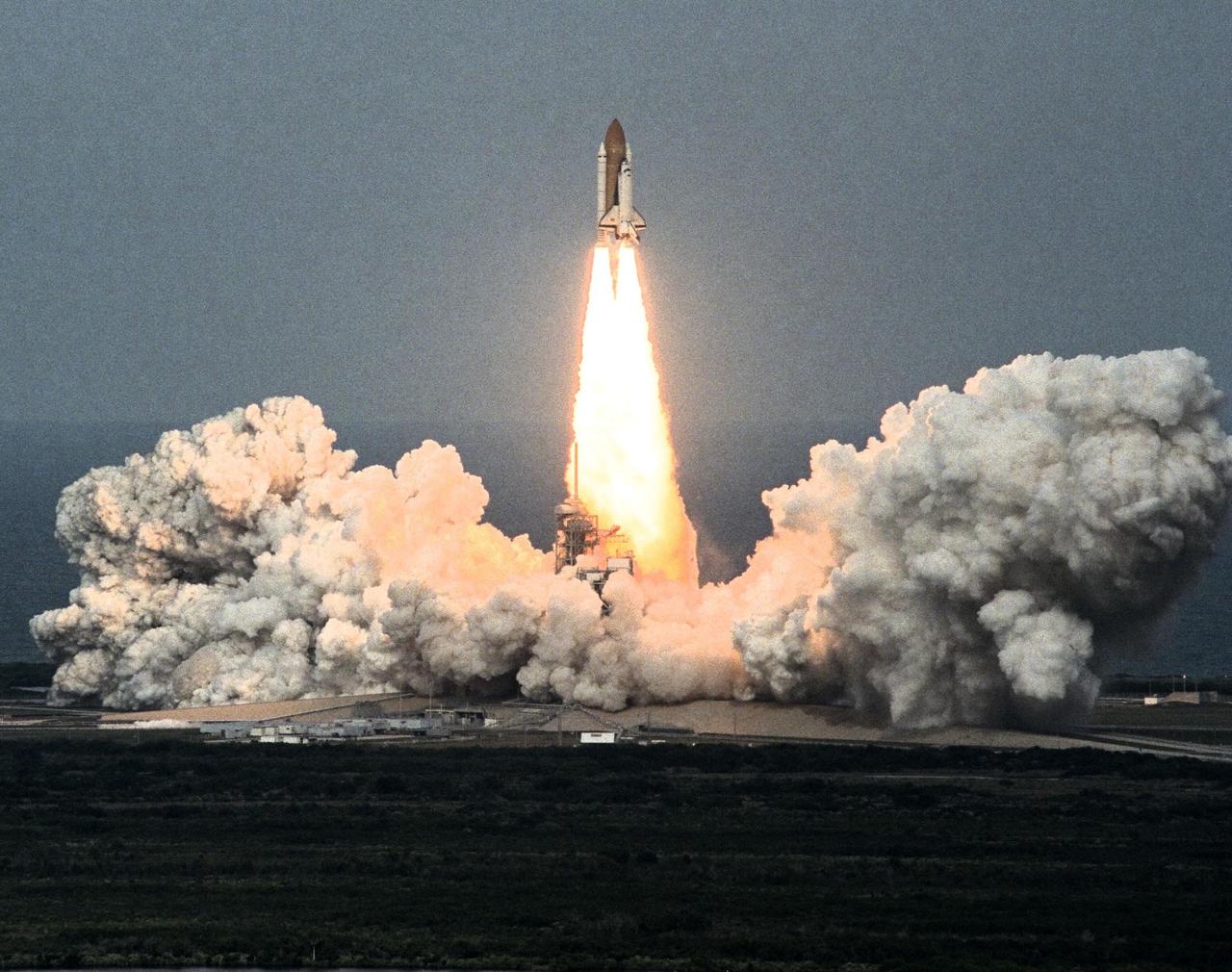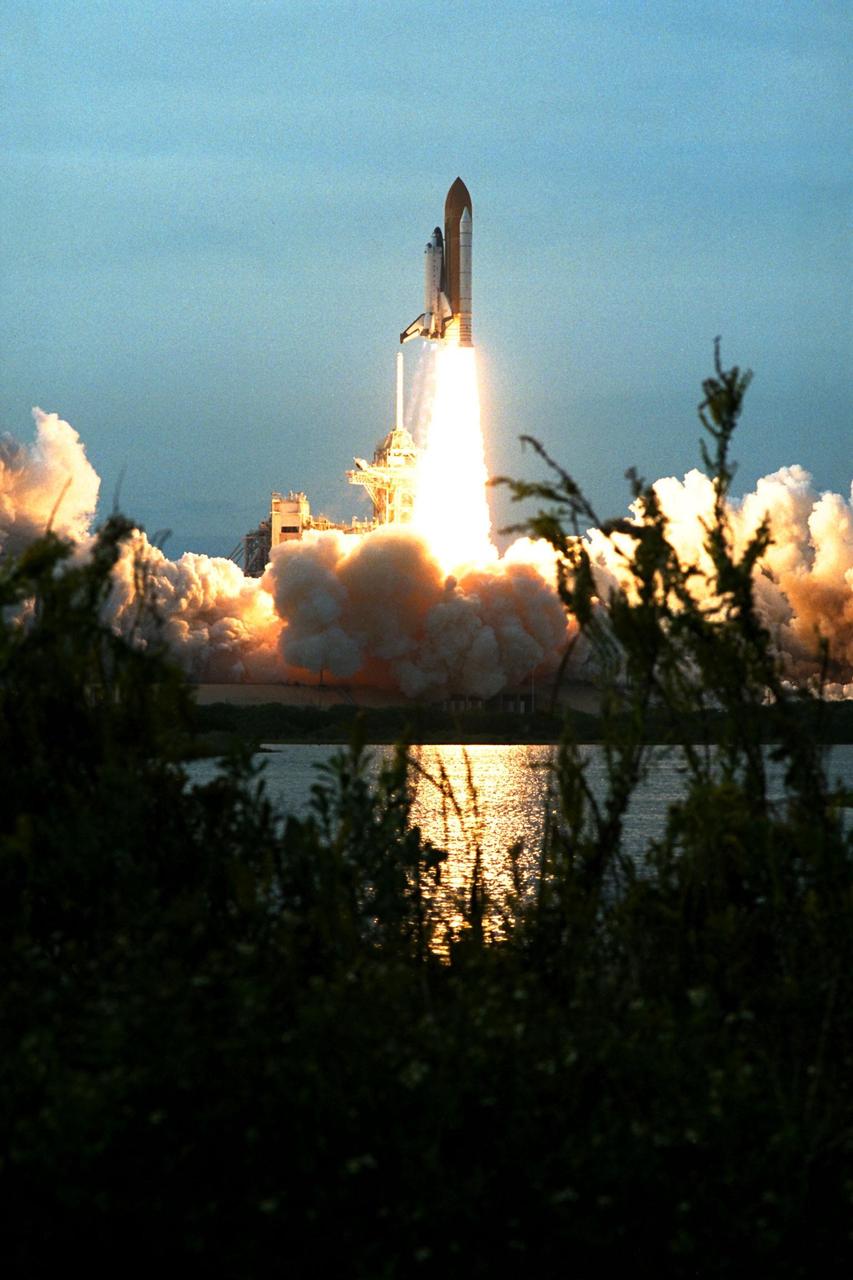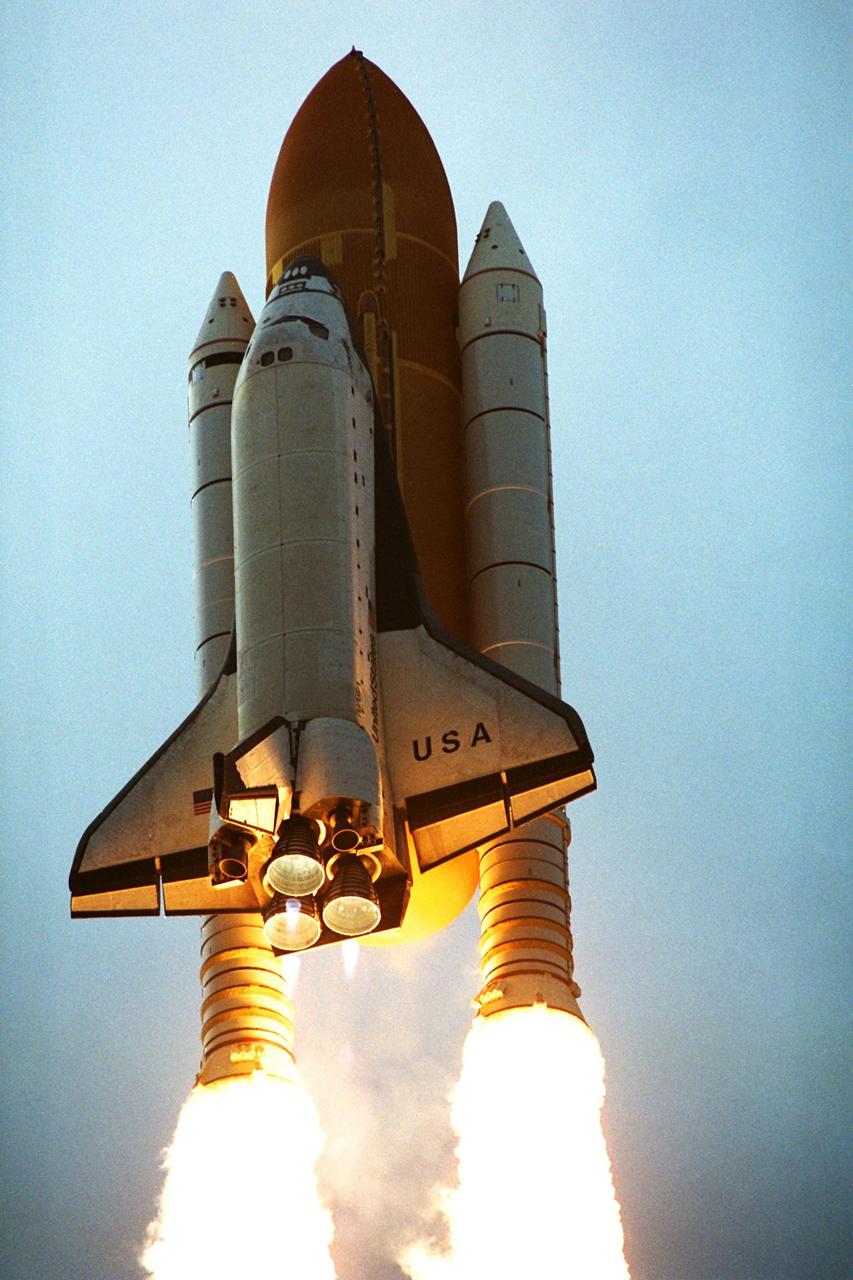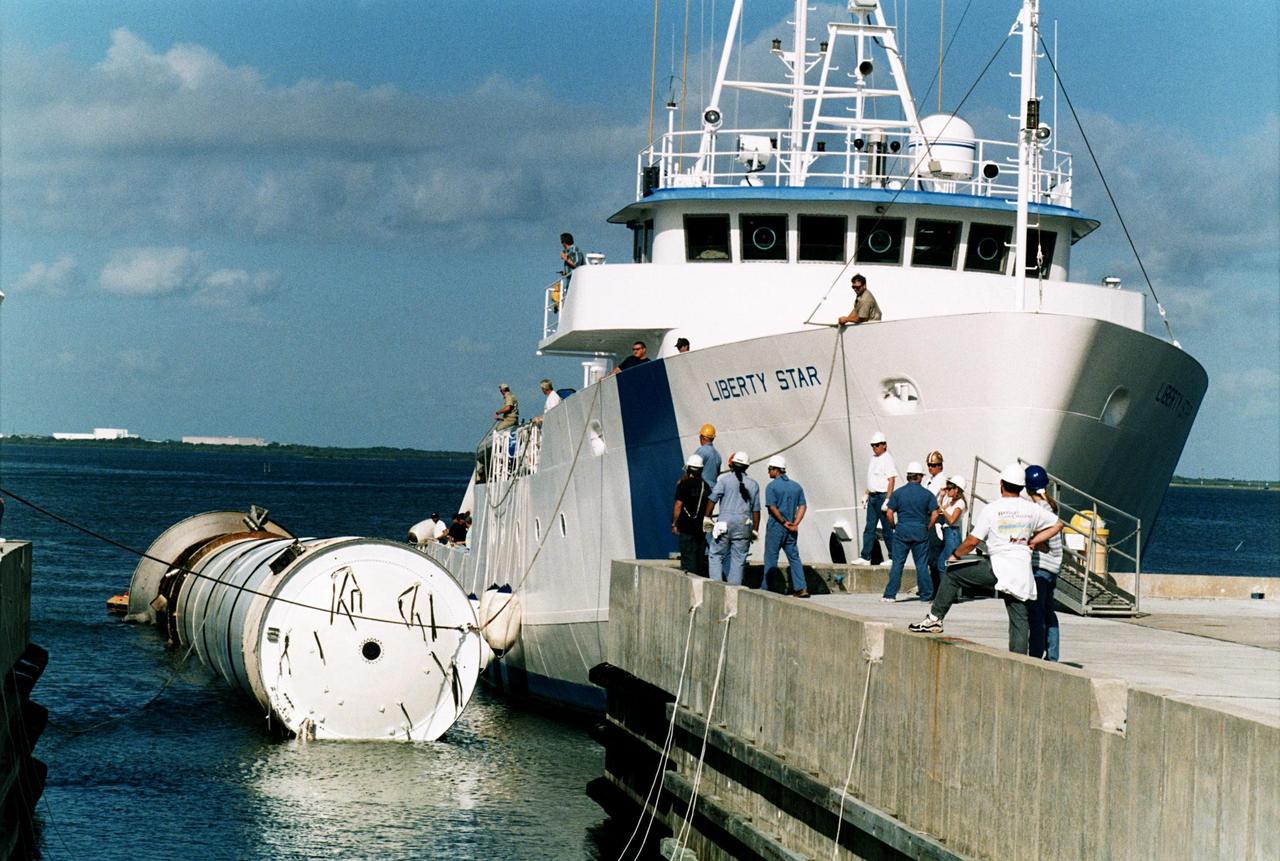STS-87 Fact Sheet
By Cliff Lethbridge

STS-87 — Columbia
88th Space Shuttle Mission
24th Flight of Columbia
Crew:
Kevin R. Kregel, Commander
Steven W. Lindsey, Pilot
Kalpana Chawla, Mission Specialist
Takao Doi, Mission Specialist
Winston E. Scott, Mission Specialist
Leonid K. Kadenyuk, Payload Specialist
Orbiter Preparations:
Tow to Orbiter Processing Facility – July 17, 1997
Rollover to Vehicle Assembly Building – October 24, 1997
Rollout to Launch Pad 39B – October 29, 1997
Launch:
November 19, 1997 – 2:46:00 p.m. EST. Launch occurred as scheduled with no delays.
Landing:
December 5, 1997 – 7:20:04 a.m. EST at Runway 33, Kennedy Space Center. Rollout distance was 8,004 feet. Rollout time was 57 seconds. Mission duration was 15 days, 16 hours, 34 minutes, 4 seconds. Landing occurred during the 252nd orbit.
Mission Summary:
Primary payloads of the mission were the U.S. Microgravity Payload-4 (USMP-4) pressurized space laboratory and the Shuttle Pointed Autonomous Research Tool for Astronomy-201-04 (SPARTAN-201-04) free-flying deployable and retrievable solar observing spacecraft.
Deployment of the SPARTAN-201-04 was delayed one day in order to allow a companion spacecraft, the Solar and Heliospheric Observatory (SOHO) to come back on line. Astronaut Chawla used the remote manipulator arm to release SPARTAN-201-04 at 4:04 p.m. EST on November 21, 1997.
The spacecraft failed to execute a pirouette maneuver several minutes after it was deployed, which indicated a problem with an attitude control system used to point SPARTAN-201-04 toward pinpoint solar targets.
Astronaut Chawla then attempted to regrapple the spacecraft, but never received a firm capture indication before attempting to guide SPARTAN-201-04 back into the cargo bay. When the remote manipulator arm was backed away, a rotational spin of about two degrees per second was imparted to the spacecraft.
Commander Kregel attempted to match the rotation of SPARTAN-201-04 by firing Columbia’s thrusters, thus allowing another attempt at grappling the spacecraft. However, this attempt was called off by the mission flight director.
Instead, a decision was made to allow astronauts Scott and Doi to retrieve SPARTAN-201-04 manually during a spacewalk already planned for the mission. The two successfully grappled the spacecraft at 9:09 p.m. EST on November 24, 1997 during a spacewalk lasting 7 hours, 43 minutes.
During the spacewalk, astronaut Doi became the first Japanese citizen to walk in space. In addition to capturing and securing the SPARTAN-201-04 spacecraft, the astronauts completed a number of tasks intended to test methods used to construct the International Space Station.
Experiments aboard the USMP-4 laboratory centered around materials science, combustion science and fundamental physics. Specific investigations included the Advanced Automated Directional Solidification Furnace (AADSF), Confined Helium Experiment (CHeX) and Isothermal Dendritic Growth Experiment (IDGE).
Other USMP-4 experiments included Materials for the Study of Interesting Phenomena of Solidification on Earth and in Orbit (MEPHISTO), Microgravity Glovebox Facility (MGBX), Enclosed Laminar Flames (ELF) and Wetting Characteristics of Immiscibles (WCI).
Remaining USMP-4 experiments were Particle Engulgment and Pushing by a Solid/Liquid Interface (PEP), Space Acceleration Measurement System (SAMS) and Orbital Acceleration Research Experiment (OARE).
Other payloads flown during the mission included the Collaborative Ukrainian Experiment (CUE) featuring a collection of ten space biology experiments involving plants. A Get Away Special (GAS) canister containing four experiments and several Hitchhiker payloads were also flown.
A NASA panel was established following the mission to determine the cause of the failure to successfully recapture the SPARTAN-201-04 payload using Columbia’s remote manipulator arm. The panel released a report blaming the mishap on crew error.
SELECTED NASA PHOTOS FROM STS-87
